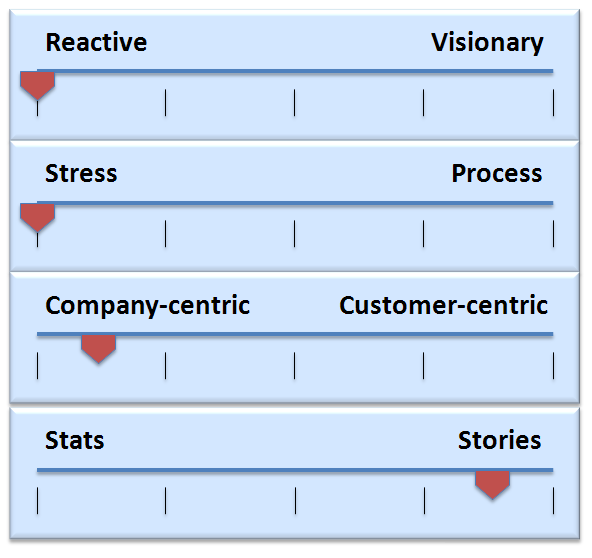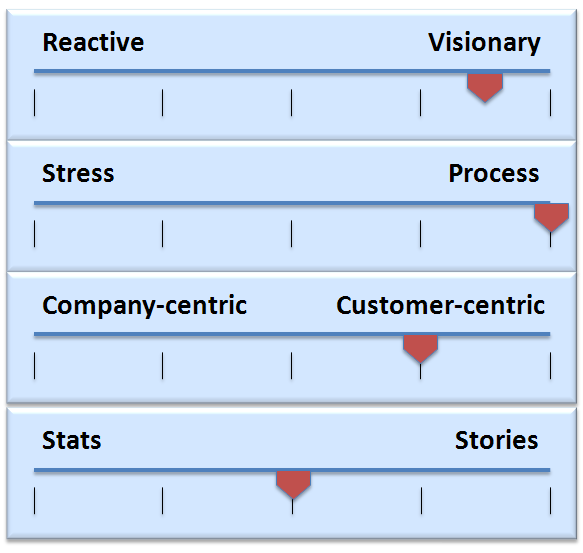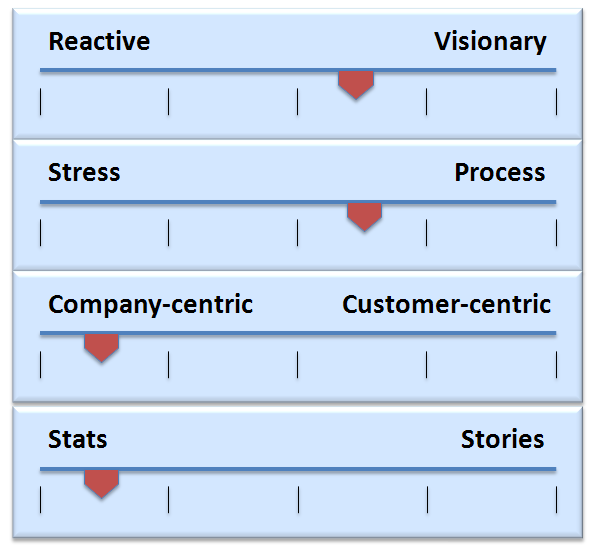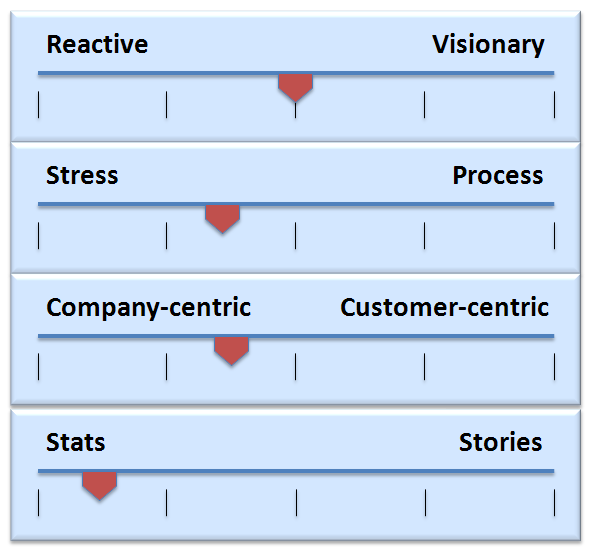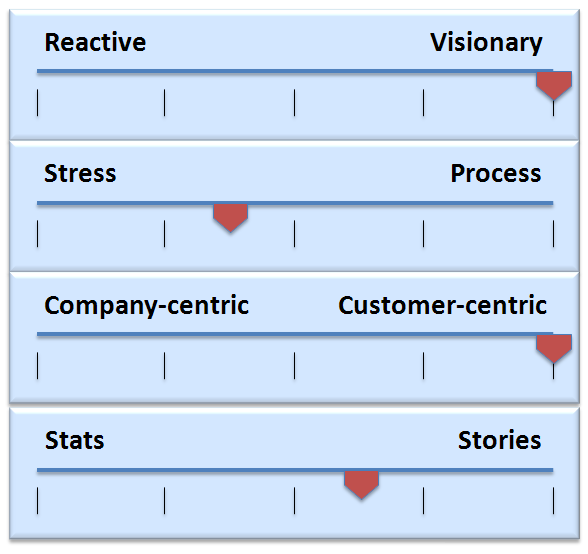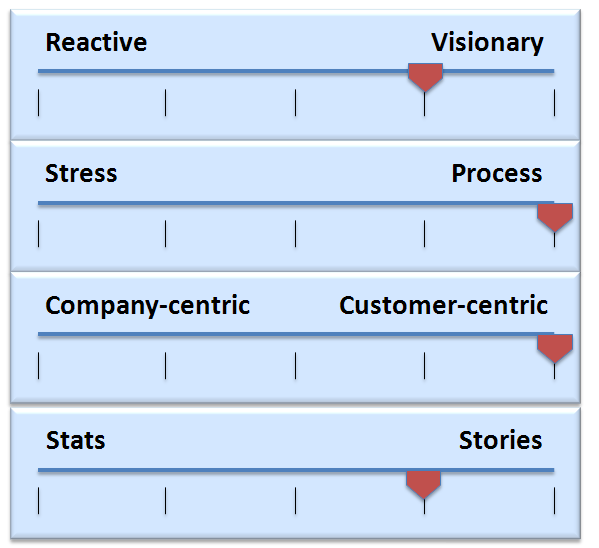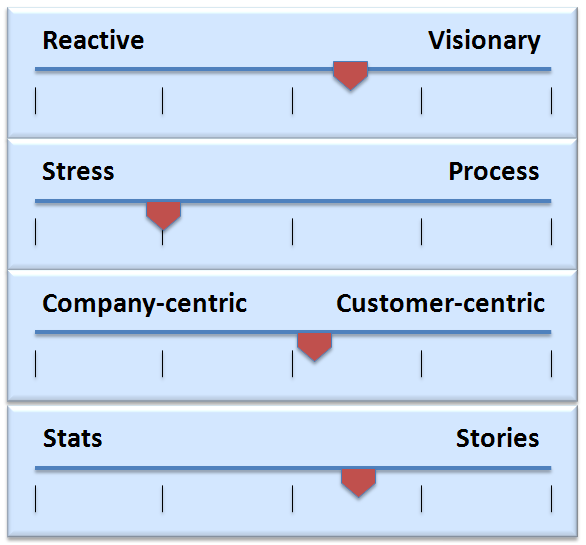Gaining Business Leader Buy-in: 7 CEO personas
You may have an incredible plan to improve your company’s marketing performance, but unless you can do a little selling, you’re never going to be able to start marketing.
I’m talking about internal selling. Often, when marketers want to make significant changes to their company’s marketing performance, it takes some budget to get the ball rolling. That may be budget to buy a new tool or platform, work with an agency, or hire some new employees.
If you want to get that budget, you have to convince the CEO (or perhaps CFO or other executive, depending on where you are in the organization) that you can deliver some serious ROI.
And yet, ironic as it may seem, marketers are usually not the best at selling, especially internally.
At last week’s Optimization Summit 2012, I had the pleasure to introduce Kristin Zhivago, President, Zhivago Management Partners, when she presented “How to Optimize Your CEO’s Anointing of Your Marketing Efforts.”
Her top piece of advice was, “You have to be the one in the company that has the personal knowledge of your customers.”
Much of your internal ability to get things done will come from being the trusted advisor who can speak on behalf of the customer to the CEO and business leaders.
To do that, she recommends actually calling customers and interviewing them. “Sales people are dogs. Marketers are cats. We’re shy,” Kristin acknowledges. But she encourages marketers to overcome their inherent introversion and get customers on the phone.
Your CEO’s ‘functional persona’
Beyond knowing your customer, Kristin advises marketers to know their CEO as well. In this presentation, she broke down CEOs (and, really, all business leaders), into seven “functional personas” to help you understand how to work with, and become a trusted advisor to, your business leaders.
Sales CEOs
Example: Steve Ballmer, CEO, Microsoft
Key characteristics: Competitive, controlling, easily influenced
Best tools: Stories backed by stats, keep him excited
Technical CEOs
Example: Tony Hsieh, CEO, Zappos
Key characteristics: Logical, inclusive, very process-oriented
Best tools: Empirical evidence, supported by stats
Finance CEOs
Example: Meg Whitman, CEO, HP
Key characteristics: Can be elitist/exclusionary, doesn’t excite easily
Best tools: Gather as much statistical data as you can, at every touch point
Legal CEOs
Example: Frank Blake, CEO, The Home Depot
Key characteristics: Can see both sides, weak on processes
Best tools: Empirical evidence, numbers, numbers, numbers
Marketing CEOs
Example: Steve Jobs, CEO, Apple
Key characteristics: Visionary, customer DRIVEN
Best tools: Likes stories, but back with facts, keep moving!
“Steve Jobs wasn’t a CEO,” Kristin said. “He was a customer terrorist.”
Operations CEOs
Example: Jeff Bezos, CEO, Amazon
Key characteristics: Always thinking “process first”
Best tools: Systems that work, no movement without a method
Serial entrepreneurs
Example: Reid Hoffman, CEO, LinkedIn
Key characteristics: Behavior will be influenced by background, always moving
Best tools: Aggressive proaction
How to talk to your CEO in a way that he will listen
Once you have a better understanding about what type of business leader you are dealing with based on these CEO personas, you will be better able to present your recommendations and results in a way that will be easiest for him to relate to and accept. As a marketer, relevant communication like this should come naturally to you.
“If your CEO is weak in an area, then it will be your job to try to compensate for that difference,” Kristin advised. Kristin shared recommendations for each spectrum in her CEO personas:
Reactive vs. Visionary
Providing your top managers with input from your interviews will make the whole leadership team more visionary.
Stress vs. Process
If your CEO is weak in process, find every opportunity to introduce time- and step-saving processes to any type of project over which you have control.
Note that the opposite of “stress” is “process.” The best managers always focus on process first, and they continue to develop and refine processes until they are as streamlined as they can be.
“I once increased the output of a 17-person marketing department by 500% in five weeks, simply – and only – by changing our review process,” Kristin said.
Company-centric vs. Customer-centric
There are CEOs who really like working with customers and who are not afraid of them. Then there are CEOs who would rather not interact with customers at all. The further the CEO is on the “let’s not confuse our plans with customer input” side of the scale, the more important it is to interview customers and bring in a report that sums up what customers think and say.
“Even the most company-centric CEO takes customer comments to heart when they are presented properly, in my experience,” Kristin shared.
Stats vs. Stories
Knowing that your CEO likes stats more than stories will help you understand how to present “results” data to him/her. Note that your conversations with customers will provide you with the “story” data that you need to convince your CEO to take a particular course of action.
If your CEO tends to think in terms of stats rather than stories, you will have to be the one who backs up the stats your CEO is talking about with stories you develop.
Related Resources:
Lead Nurturing: Market to personality and behavior, not job title
Marketing Management: What is your company doing to increase knowledge and effectiveness?
8 Challenges Undermining Your Marketing Team
Categories: Marketing customer-centric, leadership, marketing career, persona




